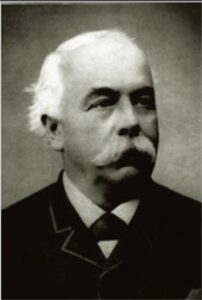One of the most well-known brands in the watch industry is TAG Heuer, but what exactly does that moniker mean? The phrase “Techniques d’Avant-Garde” is referred to as “TAG,” which is an acronym for the word. This phrase describes the timepieces’ revolutionary design, movement, and style. But, what about Heuer?

Originally, Edouard Heuer, the creator of the company, took his family name, Heuer, as the company’s name. Heuer watches have evolved into luxury Swiss timepieces ever since the Swiss firm that bears their name was first established in the 1860s. Today, TAG Heuer has established itself as a prestigious and highly respected organization over the course of the previous century and a half, of history, and as a result, it is responsible for supplying enthusiasts with high-quality watches that are suitable for any event. However, some watch aficionados confuse Heuer and Tag Heuer. Well, what is the relationship between these two brands? Let’s explore ..
In 1860, Edouard Heuer started Uhrenmanufaktur Heuer AG (translated in English: Heuer Watchmaking Inc.) in St-Imier, Switzerland, producing pocket watches, mostly in silver. Heuer received a patent for his first chronograph, in 1882. By 1887, he received a patent for an oscillating pinion, a component that is still utilized by major watchmakers in the production of mechanical chronographs. In 1911, Heuer was awarded the patent for the ‘Time of Trip’, which was the first dashboard chronograph – for usage in automobiles and aircraft. In 1914, Heuer presented the world with its first wrist chronograph, the initial wrist chronographs were modified from pocket chronographs, the crown was located at the 12 o’clock position. The ‘Mikrograph’, the first stopwatch to be precise to 1/100 of a second, was introduced, in 1916, by Charles-Auguste Heuer, Edouard’s son. The ‘Semikrograph’, a stopwatch that provided time in 1/50 of a second in addition to a split-second function, allowed the user to determine the interval between two contestants or events. Heuer’s line of chronographs grew by the mid 40s to include two and three registers, as well as a full calendar function (day, date, and month). These ‘triple calendar’ chronographs represented the pinnacle of Heuer’s research. In the early 1950s, Heuer then made the ‘Seafarer’, displaying high and low tides. By 1953, the ‘Auto-Graph’, which included a tachymeter scale allowing rally drivers and navigators to time distance. Heuer was a consistent innovation leader.
Merger of Tag and TAG Heuer
In 1985, TAG (Techniques d’Avant Garde), a French company that manufactured high-tech equipment such as ceramic turbochargers for Formula One vehicles, and Ron Dennis, a British businessman, acquired Heuer – forming TAG Heuer. Later, in 1999, the watch brand TAG Heuer was purchased by Louis Vuitton Moet Hennessy (LVMH), however, the name remained unchanged. The initials “Techniques d’Avant Garde” and the family name of the company’s founder were combined to create the moniker TAG Heuer.
TAG Heuer continued to roll, through the 2000s, and presented the ‘Pendulum Concept’, in 2010, which was the first magnetic oscillator that did not use a hairspring but was still able to provide restoring torque comparable to that of a hairspring.
Today, TAG Heuer continues to excel remaining well-known for their remarkable watchmaking skills in addition to their stunning designs, premium materials, and expert craftsmanship that go into each watch. The importance of accuracy and precision cannot be overstated within their current lines, such as Formula One, Aquaracer, Link, Carrera, Monaco, and Grand Carrera.
TAG Heuer has not only been able to endure, from the 1860s till the present day, but it has also been able to thrive, placing them with other top luxury watch brands throughout the world. The TAG Heuer roots are traced to the original Heuer propensity of – pushing limits.

